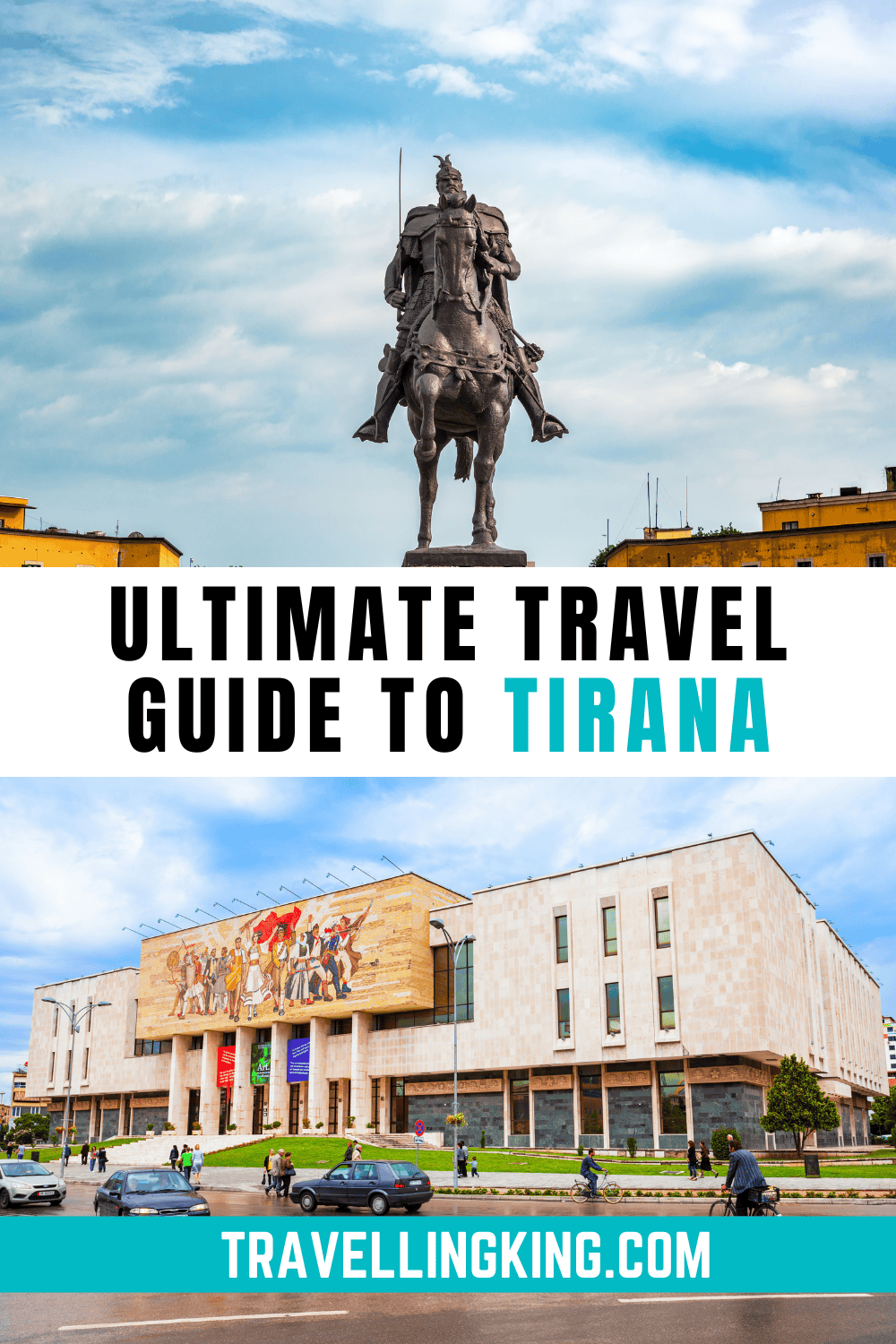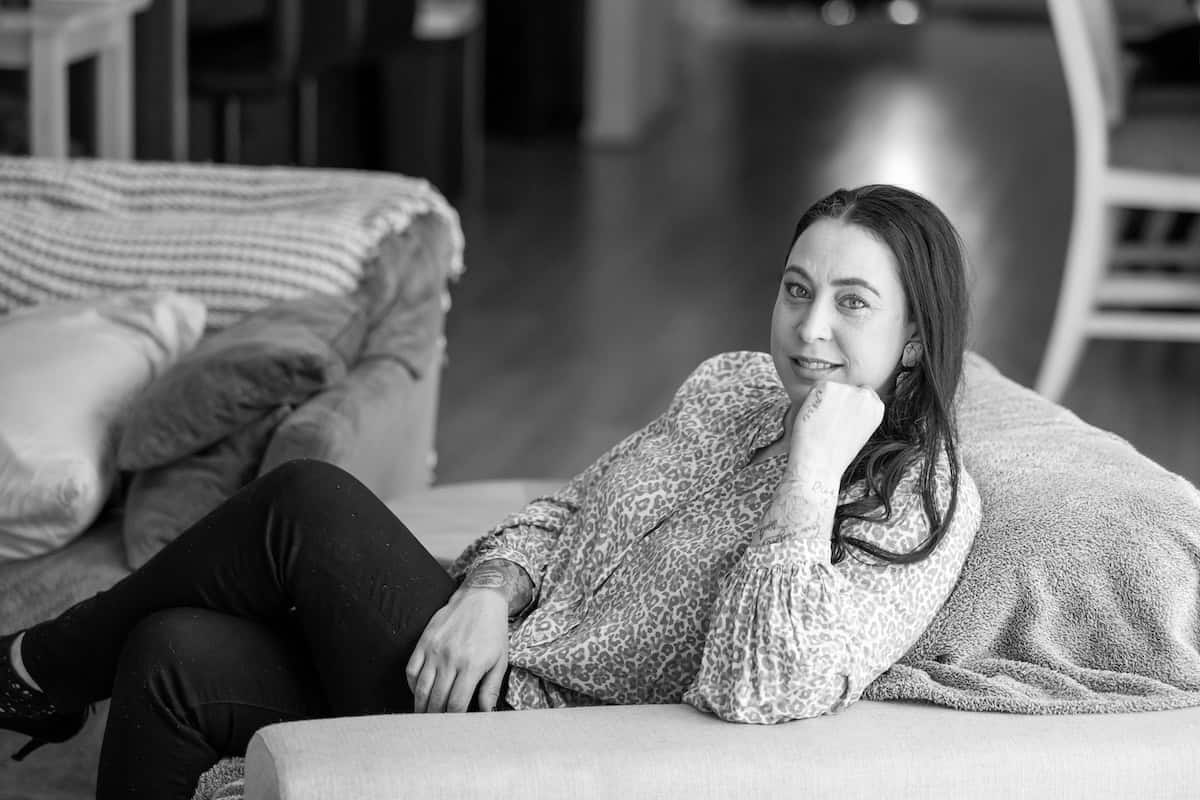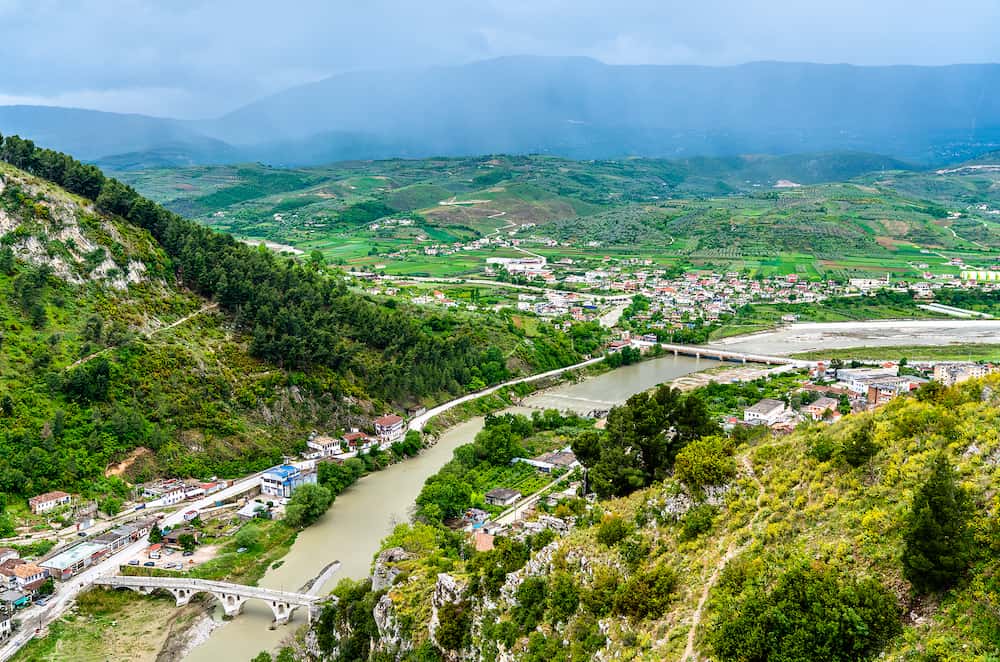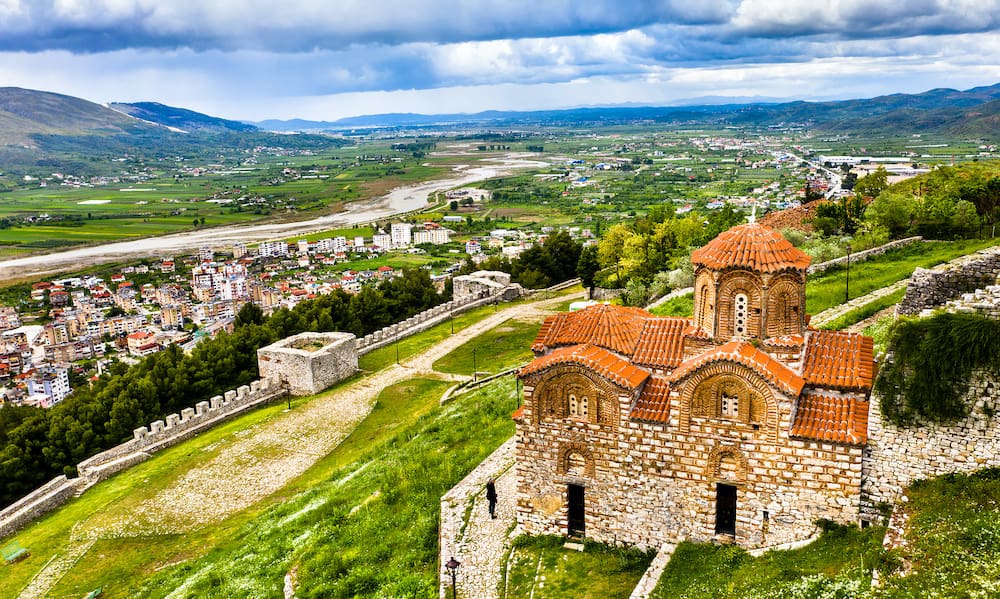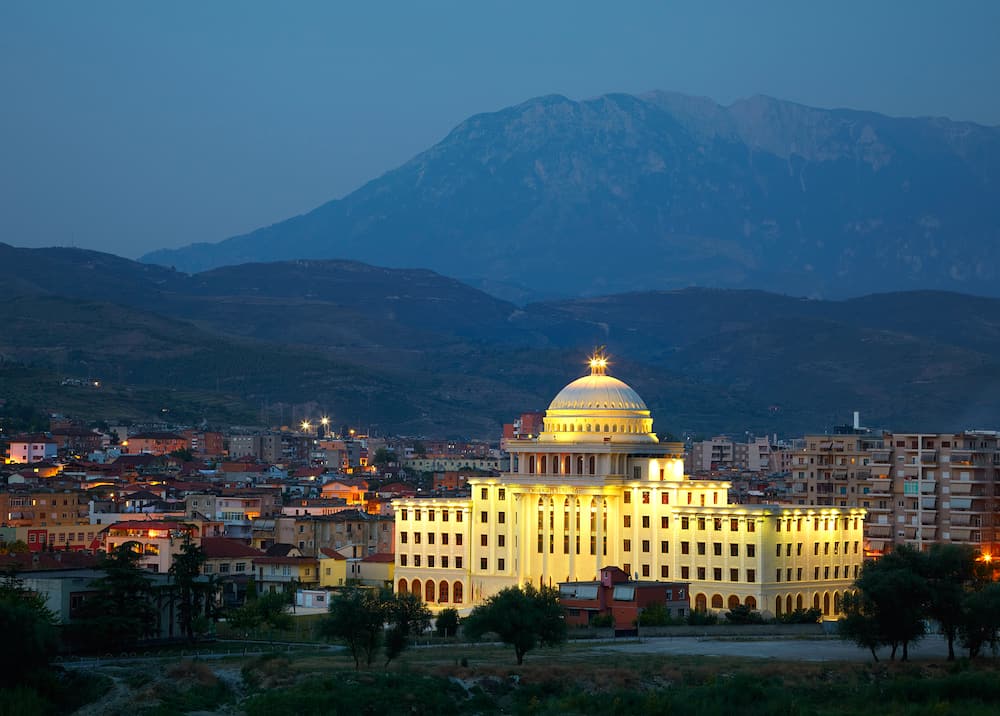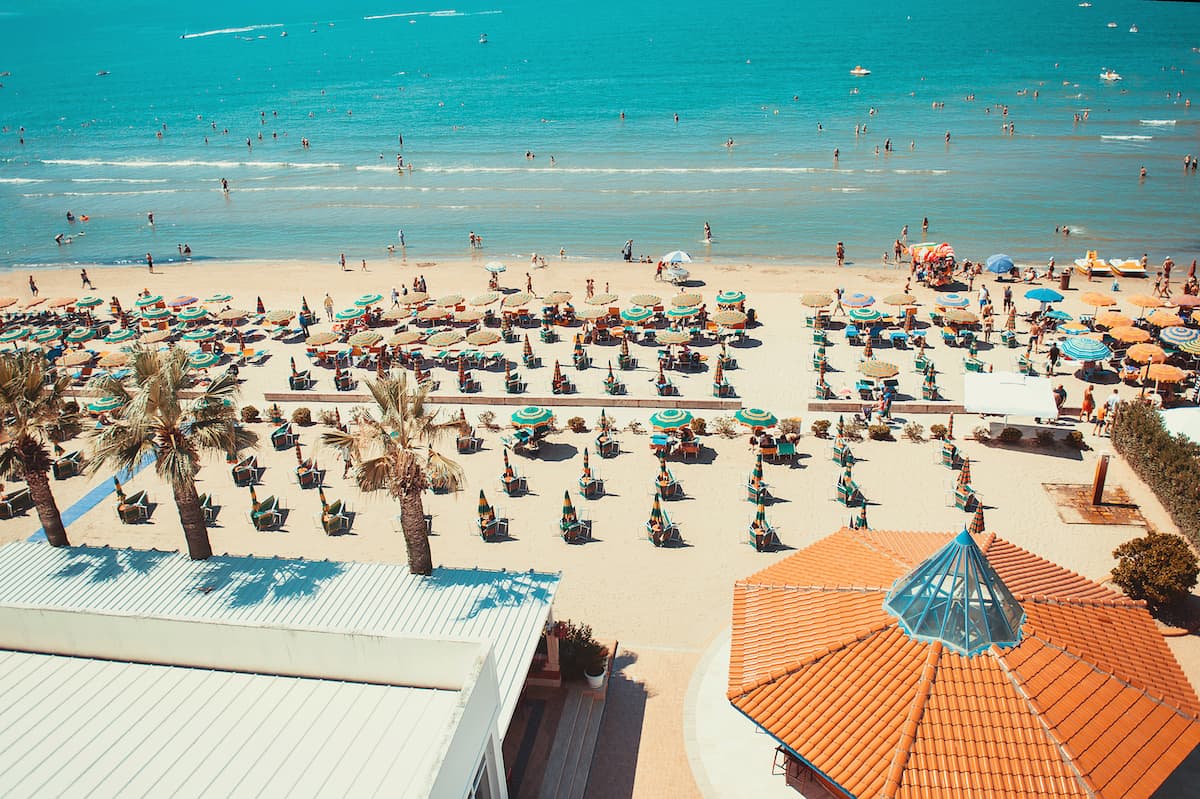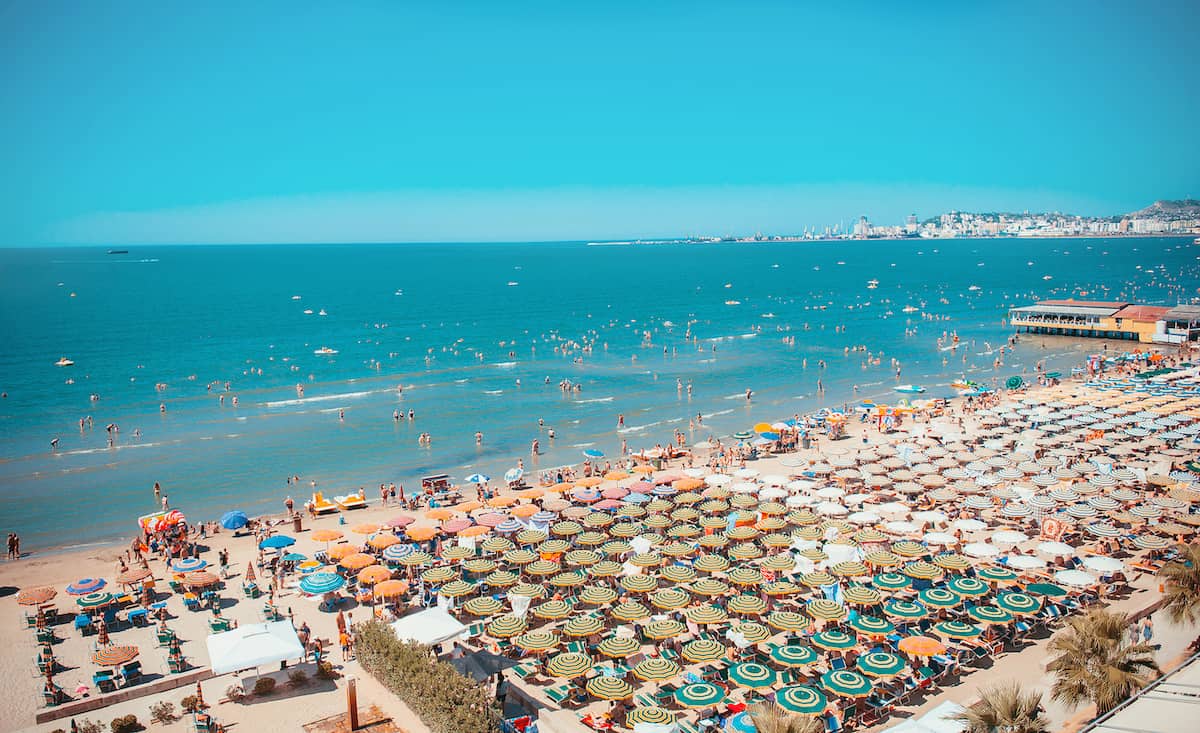Ultimate Travel Guide to Tirana
Tirana is the underrated and under-visited capital of Albania, a city on the edge of Europe that’s sure to charm any traveller adventurous enough to stroll through its historic streets and squares.
The intriguing city was for many decades under the rule of communist dictator Enver Hoxha, a pariah who turned Albania into a country more isolated even than North Korea.
The fact that this period of socialist rule was followed by civil war and gang violence, ensured that for many years Albania hasn’t exactly screamed out as a ‘Holiday Destination’ for tourists.
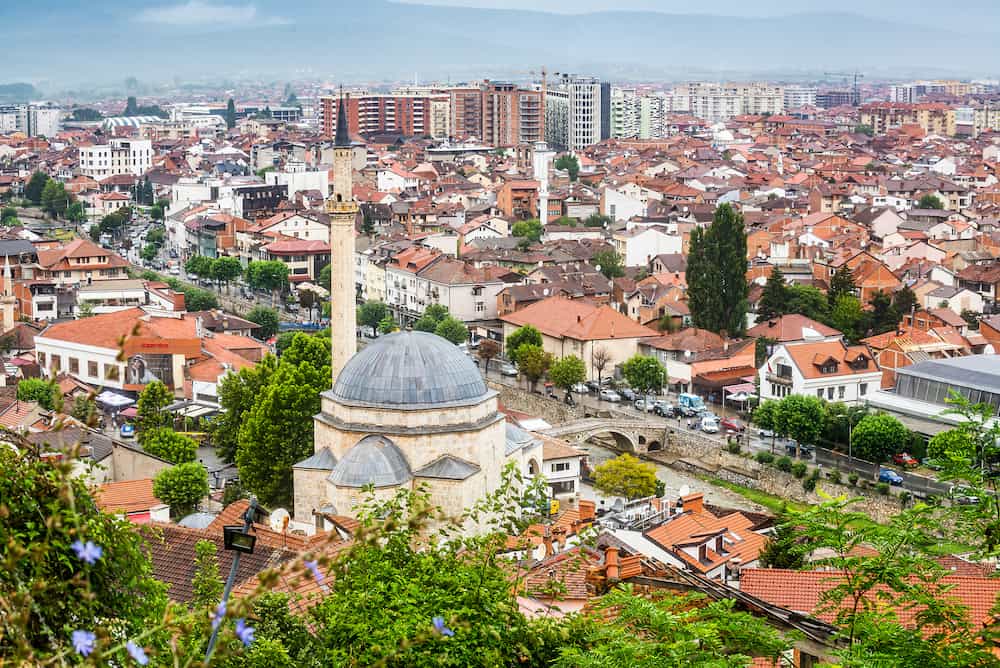
But times have changed and slowly but surely travellers are beginning to revel in the Ottoman architecture, the quirky cafes and all too cheap bars, and the unique culture that’s distinctly Albanian.
The capital is the gateway to the rest of unexplored Albania too, so to inspire your next adventure, here’s our ultimate travel guide to Tirana.
In a hurry and need help quick?
Making last-minute plans for your Tirana itinerary. We’ve got you covered. Our recommended hotels and tours for a getaway are listed below.
Recommended hotels:
- Hostel: Milingona City Center Hostel
- Budget: Hotel 3A
- Mid range: Boutique Hotel Whisky
- Family: Moncafe BoutiqueHotel Spa
- Luxury: Arté Boutique Hotel
Recommended tours:
- Hike Gamti Mountain with Bovilla lake view-daily tour from Tirana
- Tour of North Macedonia; Ohrid & Struga from Tirana
- City & Food Tour of Tirana in One Day
- Walking Tour of Tirana
Other Helpful Links
- Cheap flights
- Savings on accommodation from hostels to luxury hotels
- Affordable car rental options
- Affordable sightseeing tours and day trips
- Travel Adapter – All in one so you don’t have to carry a bunch around
- Wise Card : hold up to 40+ currencies at once to spend in in over 150 countries
This post contains some affiliate links for your convenience. Click here to read my full disclosure policy. You can also read our content/editorial policy here.
How to get to Tirana
Of all the Balkan nations, Albania is the most difficult to travel to, and even the capital city, Tirana, can be tricky to reach.
Decades of under development and strife have caused the country to have limited infrastructure and transport facilities while there are only limited flight connections to the rest of the world.
It’s well worth the effort though, and if you do need to fly then there are irregular flights to many major European cities such as London or Frankfurt, from where you can then catch another connection further afield. You’ll just need to be flexible with your schedule.
Tirana has no train station in the city itself, although there is one on the outskirts which has limited services to nearby cities.
The bus is usually the best option when travelling around Albania or the Balkans, but again, with no centralised bus station then actually finding the right departure point is a challenge in itself.
Albanian transport services are notoriously inefficient, and you’ll need to schedule a whole day just to travel from Tirana to Shkoder, even given the short distance involved. The roads are bad, and the bus – if you can find where it leaves from – won’t leave until it’s full.
Travelling to Tirana can be a challenge, but that’s part of any adventure in Albania.
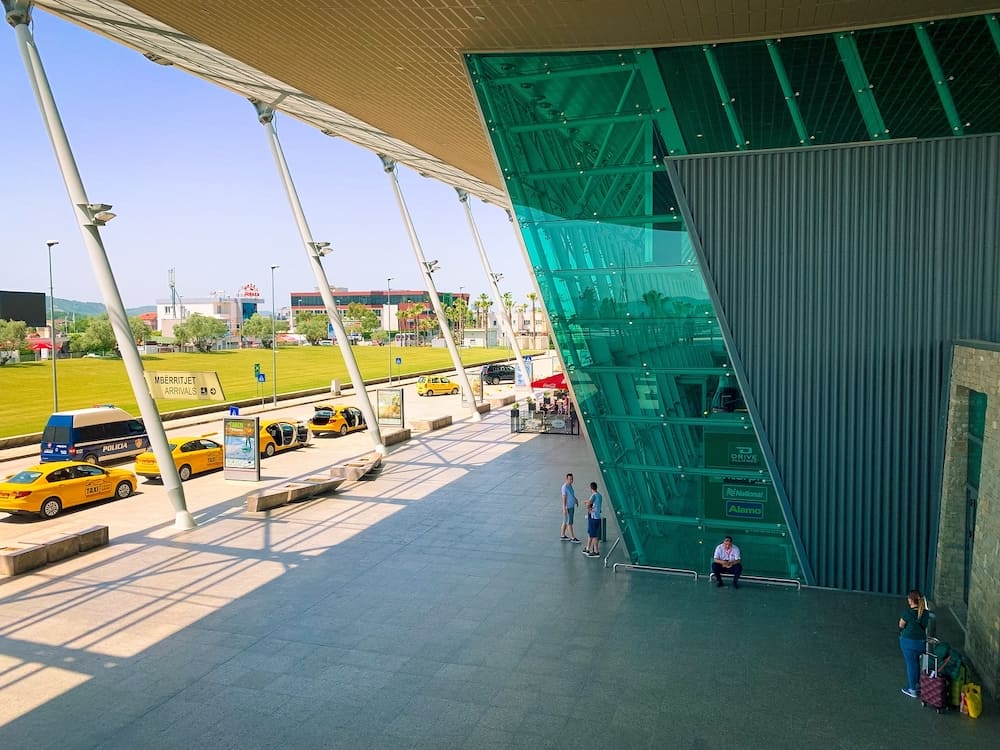
What to expect in Tirana
Tirana is a unique blend of different historical eras, and there are few other cities like it in Europe. You have Ottoman and Islamic influences, communist and socialist influences, and Italian and Mediterranean influences too.
Tirana is really where east meets west and that’s reflected in the food, the culture and the language. The Albanian language itself is very unique, and very unlike any other language in the Balkans.
You will find though that due to the large Albanian diaspora across Europe that a multitude of languages will be spoken in the city.
English is becoming more commonplace, but due to cultural influences, many locals might speak Italian or Greek or even German to a high level.
The local currency is the relatively inflated Albanian Lek which you will be able to withdraw from ATMs or find at money changers. If you are desperate then you might find that Euros are also accepted.
By western standards, Albania is an fairly poor country, and tourists will find that their money can go exceptionally far in the country.
How to get around Tirana
The main sights in Tirana’s city centre are close enough that you can walk between them, and indeed, a walking tour might be the best way for you to get around the most popular attractions.
Navigating further afield though can be a challenge, but you will need to if you are looking to take public transport out of the city and to anywhere else in Albania or the Balkans.
There are public buses in Tirana that run set routes and are very cheap, but also very slow and inefficient.
The easiest way to get somewhere fast is to take a local taxi. Again, costs are relatively inexpensive, but just be sure to either haggle your fare beforehand or be adamant that the meter is turned on for the journey.
The best time to visit Tirana
Tirana has a wonderfully pleasant climate, and the city can be visited all year round. Because the capital is set inland and away from the Mediterranean coast, it’s never too hot here in summer, but given the southern location in Europe, the winters are never too cold either.
The hottest months of the year are between June and September, but temperatures only infrequently rise above 30 degrees Celsius.
You can even escape to the nearby mountain tops if that gets too hot for you.
Temperatures drop drastically over winter but rarely go below freezing, and in the city itself you’re unlikely to see snowfall.
Winter can be a good time to enjoy a quieter side of the city, while spring and autumn will have the most pleasant temperatures.
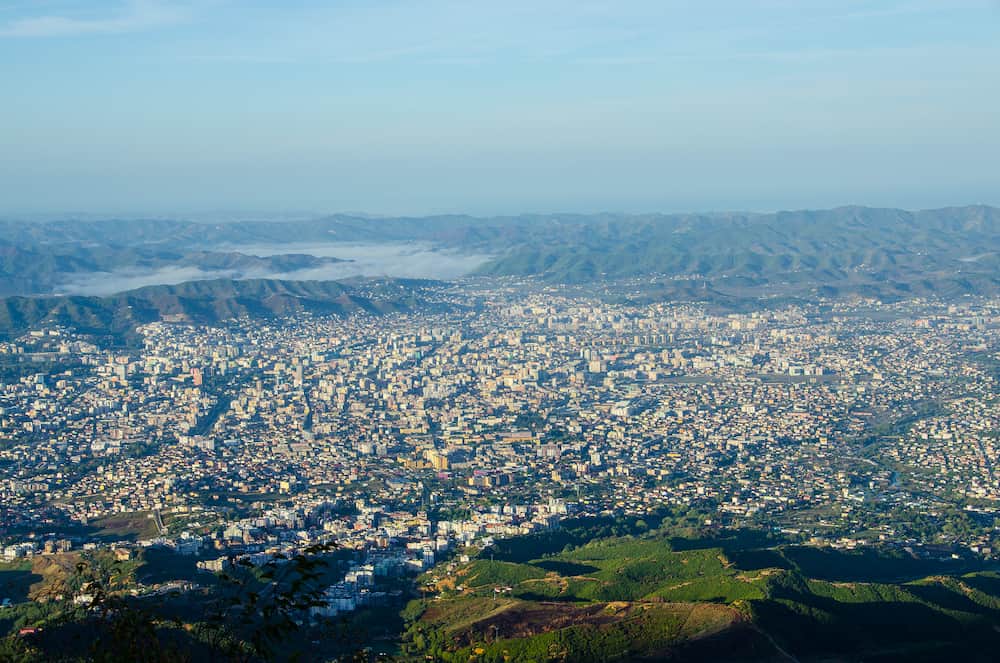
Things to do in Tirana
Skanderbeg Square
Named for the fierce warrior hero of Albania, Skanderbeg Square is the main, central square in Tirana.
It’s an impressive place to visit, and home to a towering statue of Skanderbeg himself, a medieval general who fought for Albania’s independence.
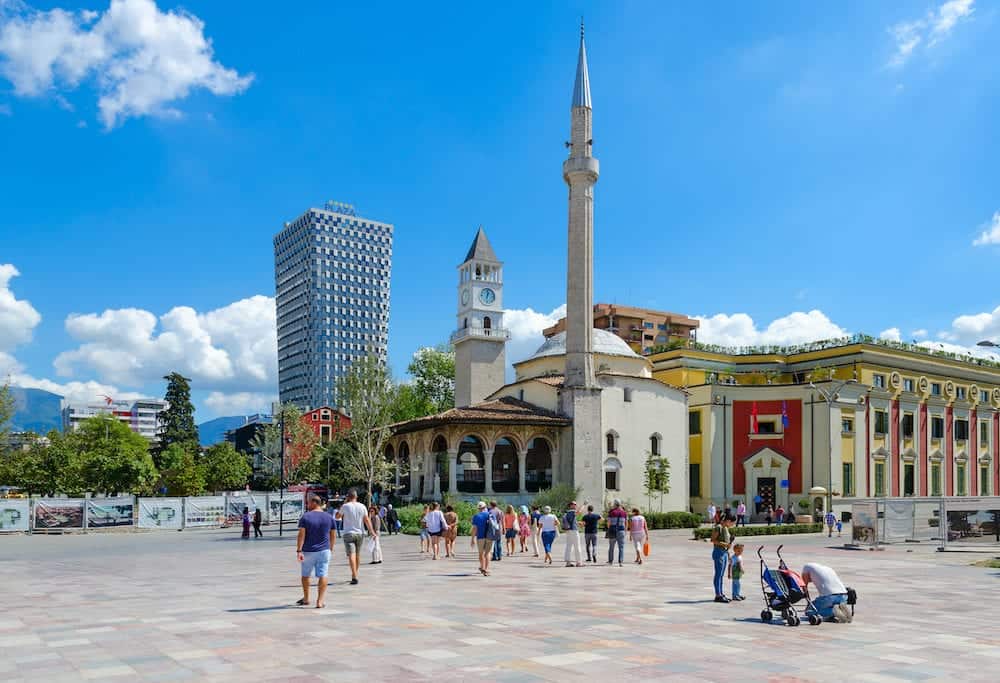
National Museum of History
The huge, undeniably communist looking building on the edge of Skanderbeg Square is home to Albania’s National Museum of History.
This enormous museum will take up several hours of your day, and you’ll find exhibits collected from Roman times, through to the dark days of the Hoxha regime.
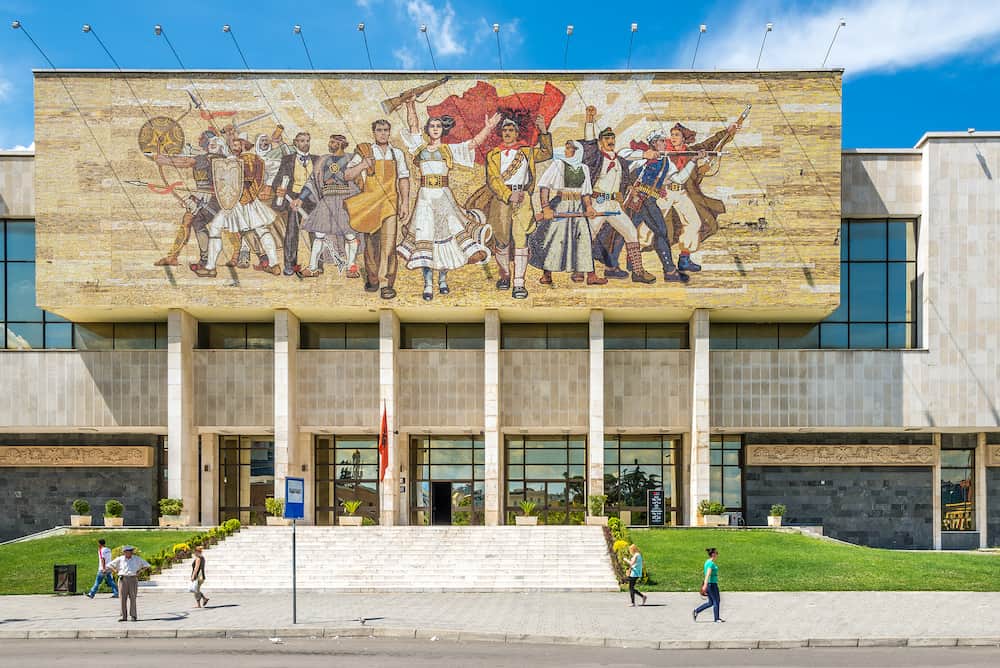
Pyramid of Tirana
The city is full of bizarre, communist architecture, but the strangest of them all is the Pyramid of Tirana.
This crumbling, pyramid-shaped building now lies derelict, because it was originally designed to hold a museum dedicated to the dictator Enver Hoxha.
While the Pyramid of Tirana has been slated for demolition several times since the fall of communism, it somehow keeps managing to escape destruction and has evolved into a unique symbol of the city, that attracts many foreign tourists in its own right.
Next to the Pyramid, you can find several other unique sights, such as a Peace Bell made from old bullet shells, and a piece of the Berlin Wall.
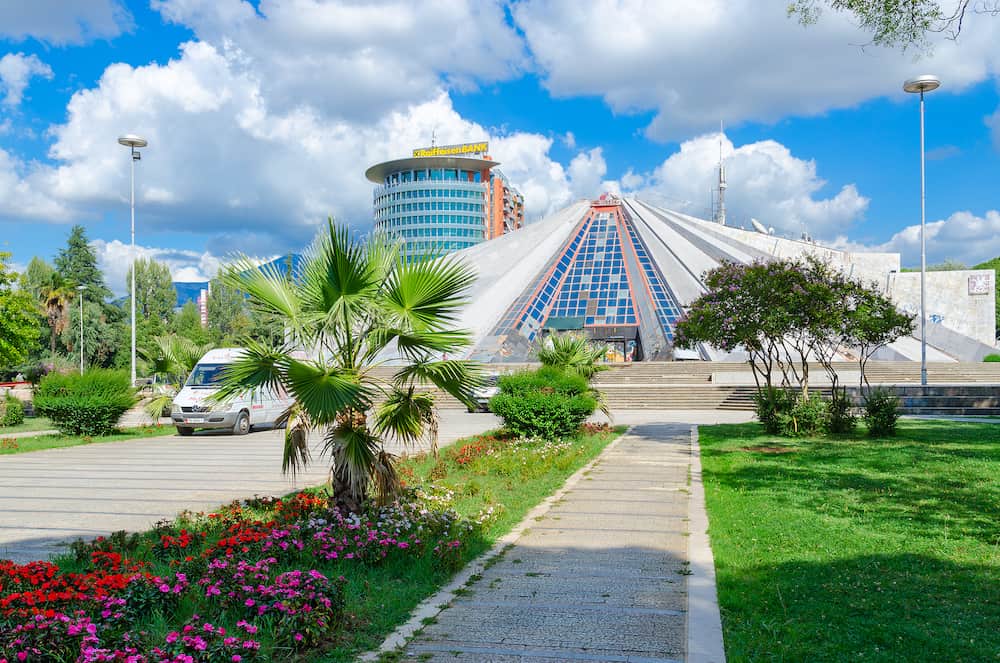
Bunk Art
One of the best examples in Albania of repurposed communist infrastructure can be found with a visit to Bunk Art. This modern art exhibition and history museum is located deep within the depths of an old nuclear bunker.
The bunker was originally designed to shelter Enver Hoxha and his cronies in the event of war, but after the fall of communism, the abandoned fallout shelter became an art space, and now tells the story of the regime’s terrors through the 20th century.
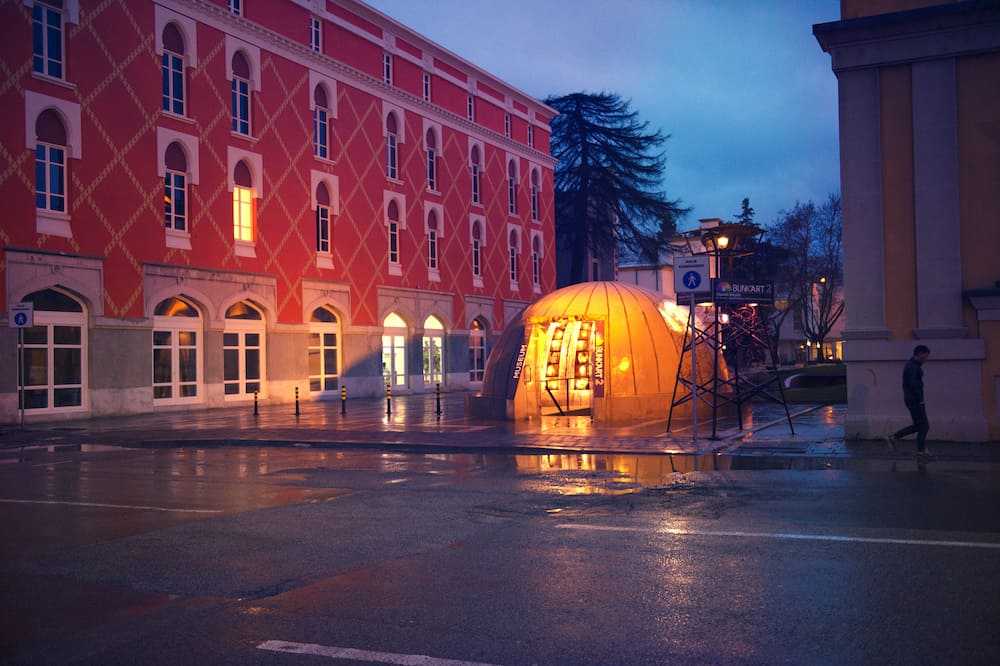
House of Leaves
To learn more about the dark days of the 20th century, then you can also head to the House of Leaves.
It might sound rather pleasant given the name, but actually, this nondescript building in Tirana was for many decades the home of the secret police.
It was originally used by the Gestapo during the German occupation in World War II, but as soon as the Nazis were ousted, the communists came straight in and turned it into their own secret police headquarters.
Today, the building has been developed into an exhibition detailing the stories of those who suffered under the paranoia of both fascism and the communist dictatorship, and it’s a unique if sobering insight into the not too recent past of Albania.
Mount Dajti
To escape the bustle and chaos of Tirana, then take a trip outside the city to Mount Dajti. In fact, you can be out of the city in just 15 minutes flat, as the excellent Dajti Express cable car takes you to the mountain summit from the outskirts of Tirana in no time at all.
The views from the top are sweeping, and the fresh air in the middle of this national park is wonderfully rejuvenating, especially in the heat of summer.
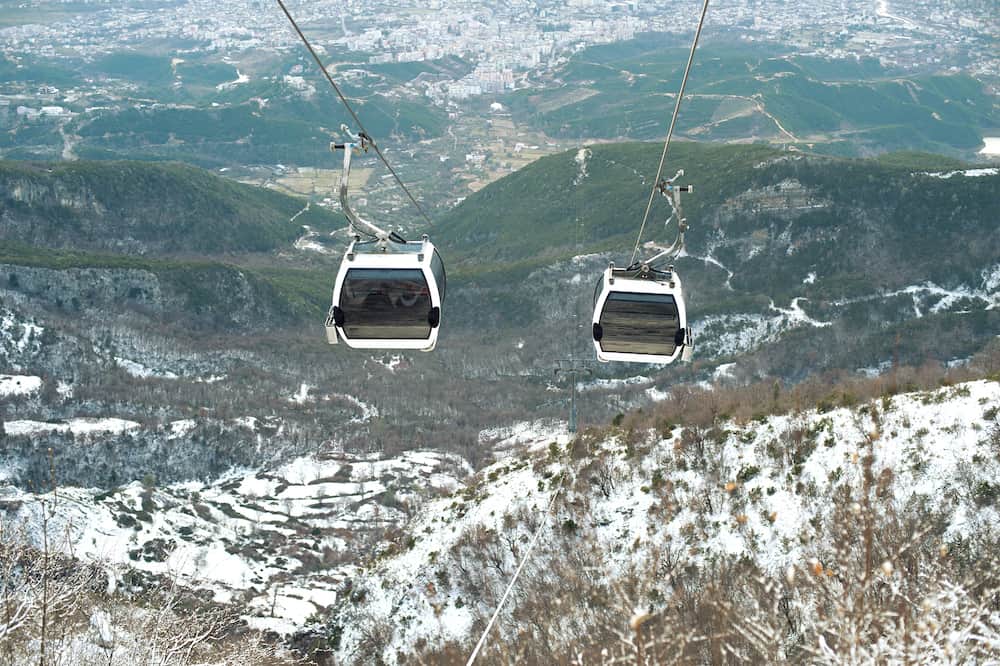
Tanners Bridge
The Tanners Bridge is a small but important attraction in the centre of Tirana. Dating back to at least the 17th century, this old stone bridge is one of the best examples of an Ottoman-era river crossing that you can still find in the capital city.
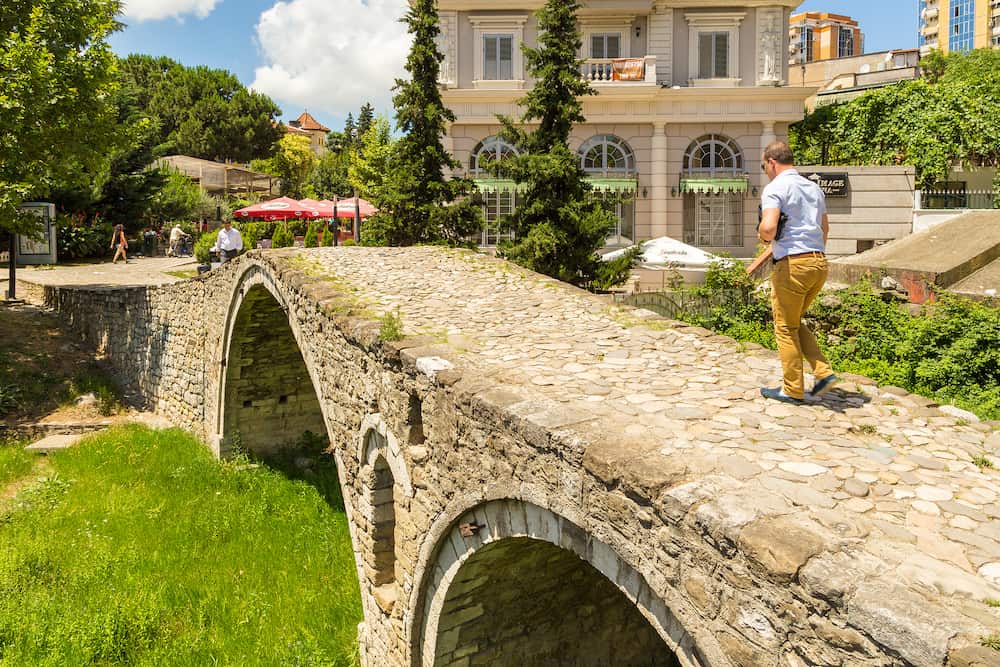
What to eat in Tirana
Tirana has a surprisingly eclectic culinary scene and the number of restaurants, bars and cafes always seem to be increasing each year.
The foodie scene here represents a whole smorgasbord of European cuisines, from Turkish and Greek to Italian and Mediterranean, but of course, with a lot of Albanian flavours and delicacies thrown in as well.
Due to the low cost of living in the capital, you can generally eat out for a fraction of the costs of neighbouring countries, and you can dine in five-star elegance for very little.
There are many excellent Italian restaurants, while the revolving Sky Restaurant on top of the TV Tower is always a favourite with tourists and a great way to kick off the Tirana nightlife on the weekend.
Of course, you will want to make sure that you try the local dishes too while you are in Tirana, and the national dish is often considered to be Tave Kosi, a baked dish that consists of lamb, eggs, yoghurt and plenty of spices.
You’ll also find kebabs everywhere, and the meat, veg or cheese pies called Bureks, which are two of the most enduring Turkish culinary legacies in the Balkan region. A weekend in Tirana is never complete without tasting the local Rakija either, a fierce spirit that’s drunk everywhere.

Where to stay in Tirana
Budget – as with the food, accommodation in Tirana is also comparatively cheap by western standards, and budget travellers can rejoice in the budget options on offer.
Hostels are a relatively new concept here, but more and more are springing up across the city each season. Tirana Backpacker Hostel is a classic choice for travellers, claiming to be the first-ever hostel in the capital.
Midrange – Apartments and homely guesthouses in Tirana can be just as cheap, if not better value, than the hostels in the city.
The Grand Hotel Colosseo is a great mid-range choice if you are looking for a more traditional hotel choice, however.
Luxury – Travellers looking for a bit of luxury and modern comforts will want to book into the Plaza Tirana, a great hotel offering excellent amenities and spacious rooms right next to Skanderbeg Square.
The Mak Albania, found next to the Presidential Palace and complete with swimming pools and fitness centres, is another luxurious favourite.
Tours to do in Tirana
Walking Tour
The best way to explore Tirana when you first arrive is to join a walking tour of the city. Be guided through the Albanian capital by local guides as you learn about the history of the city, from the Ottoman era through to the modern-day.
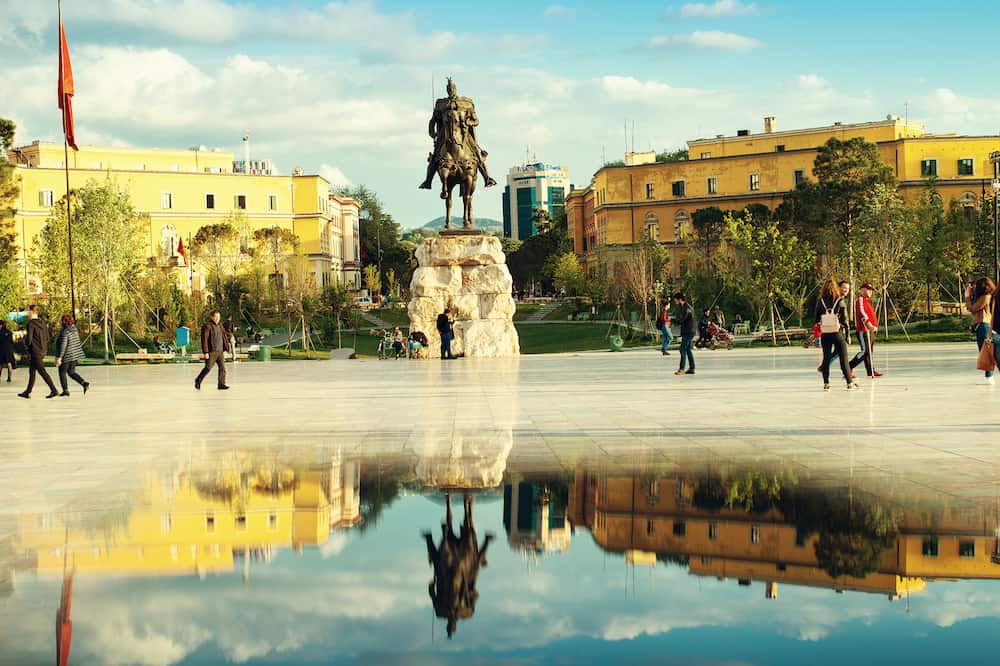
Communist Tour
Tirana is a city that still has a distinctively socialist feel when it comes to the culture and the architecture because the legacy of Enver Hoxha and his communist regime is still keenly felt.
Join this communist tour which shows the Albanian capital to learn more about the dark days of isolationism and to hear and see the mad-cap schemes and plans of one of history’s most paranoid dictators.
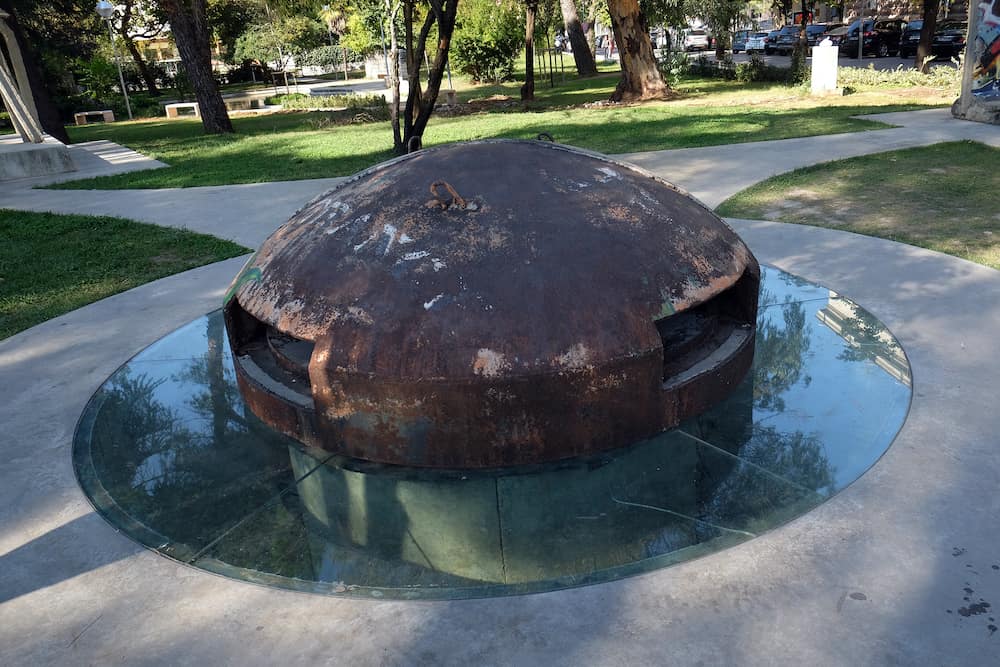
Food Tours and Cooking Classes
Join this food tour of Tirana to see where the best local bites to eat can be found across the city. Explore the bustling marketplaces and hole in the wall eateries, or better yet, factor in a cooking class to your travel plans to learn how to actually make your favourite Albanian dishes.
Day trips from Tirana
Berat
One of the best day trips from Tirana can be found to the south of the capital. Berat is a small city surrounded by superb landscapes, including mountains and river valleys.
It’s also one of the best-preserved examples of an Ottoman-era settlement in Albania, and you can marvel at the array of white stone houses that have somehow stood the test of time.
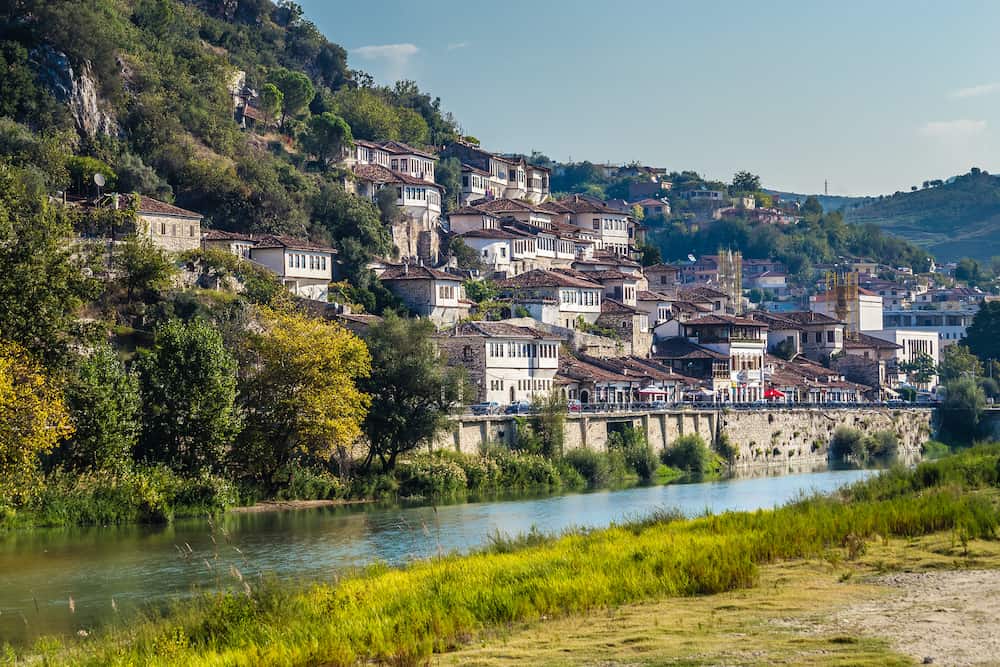
Shkoder
Shkoder is one of Albania’s premier tourist destinations, because the northern city is found on the edge of the enormous Lake Shkoder.
Split between Albania and Montenegro, this is one of the largest lakes in Europe and a beautiful place to visit.
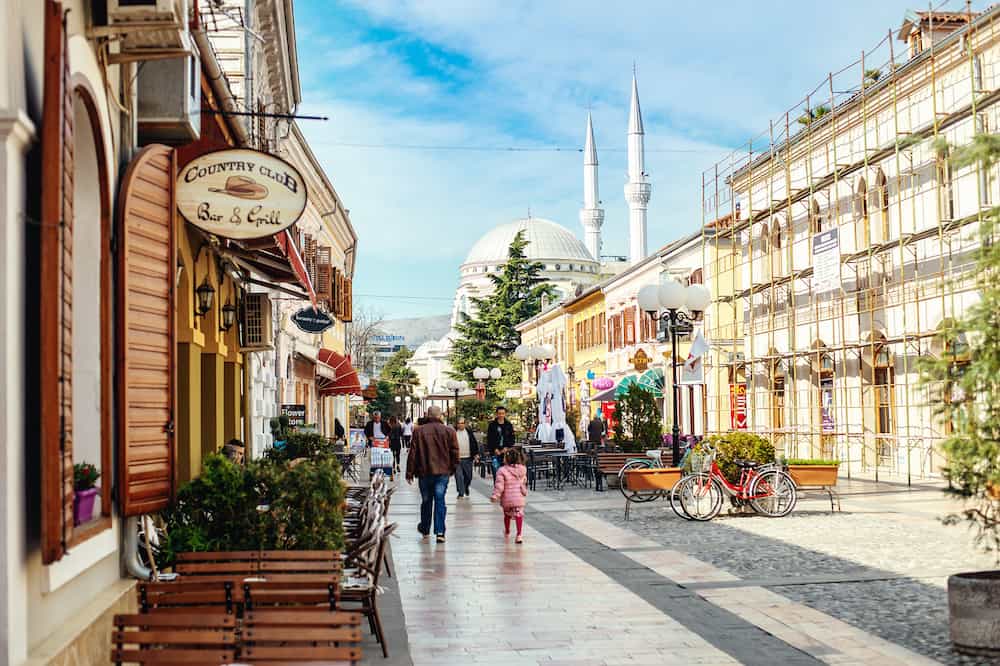
Durres
Head to the coast, and visit the city of Durres to see a different side of Albania. Albania’s second city is a bustling metropolis in its own right, but the highlights also include ancient Roman ruins, medieval castles and Mediterranean beaches.
Recommended tours in Tirana
- Berat Full Day Trip from Tirana
- Shkoder Day Trip from Tirana
- Tirana and Kruja Full Day Tour
- Exclusive Pottery making experience in Tirana
- City & Food Tour of Tirana in One Day
- Communist History Tour Tirana & Street Food
- Rural Tirana: caves and canyons
- Grand Wine Tasting & Food Tour of Berat
- Fly Tandem Paragliding Experience
If you’d like to save it for later, please save it to Pinterest.
